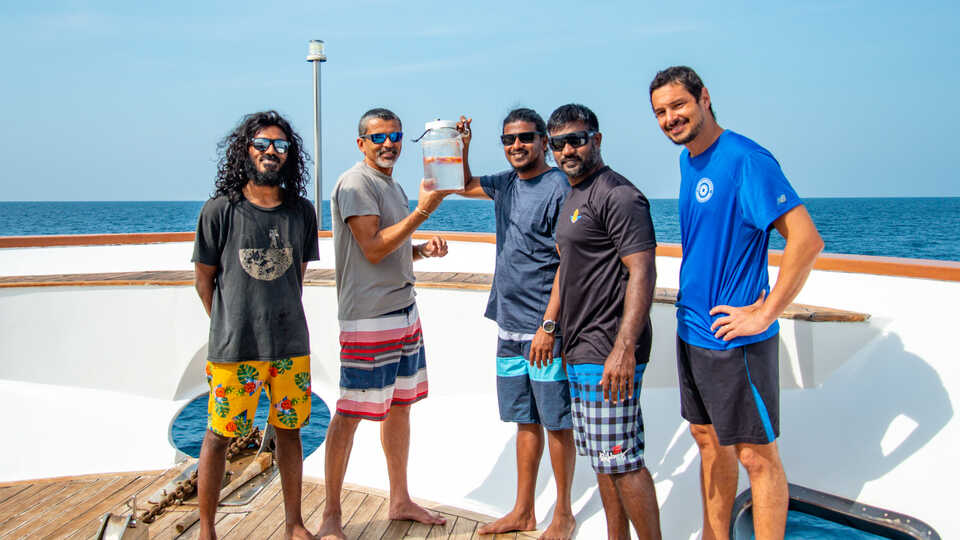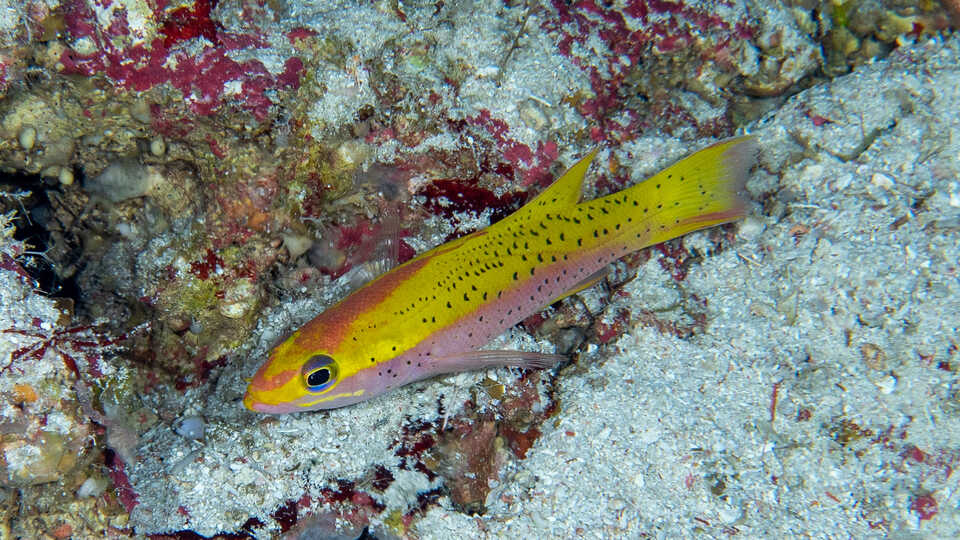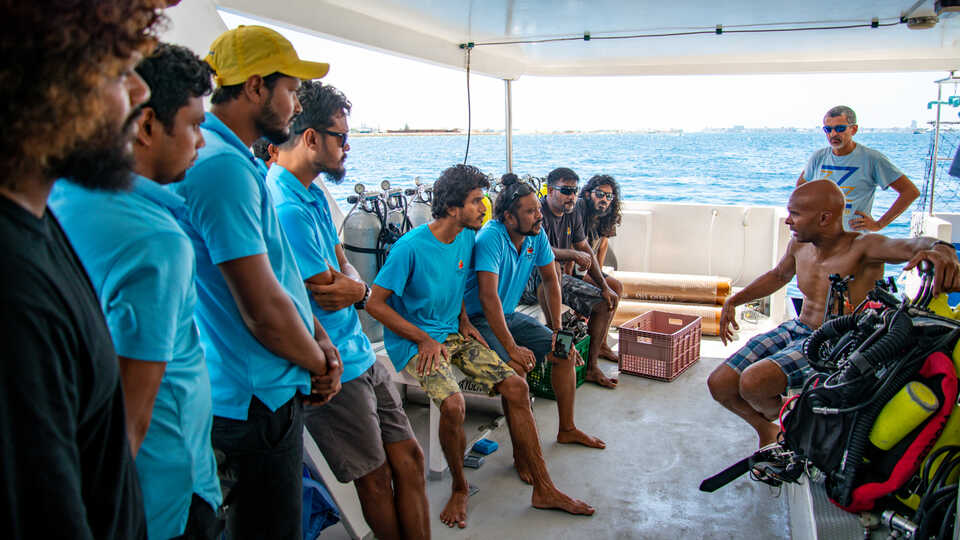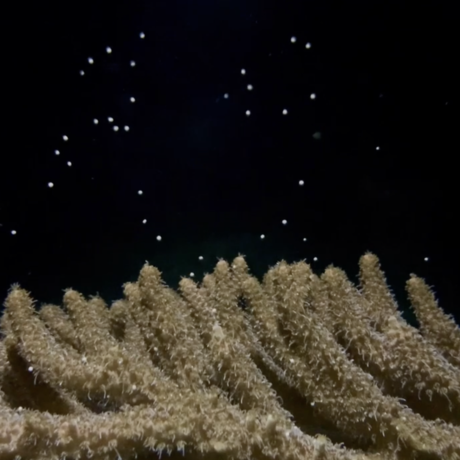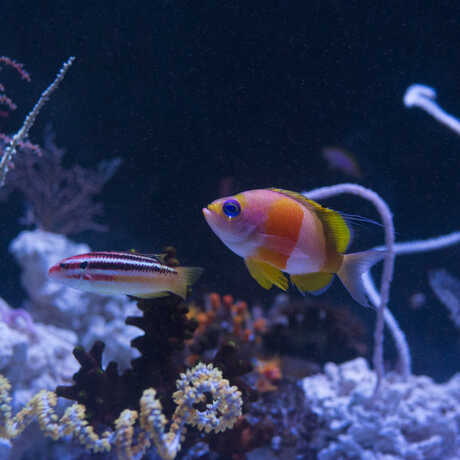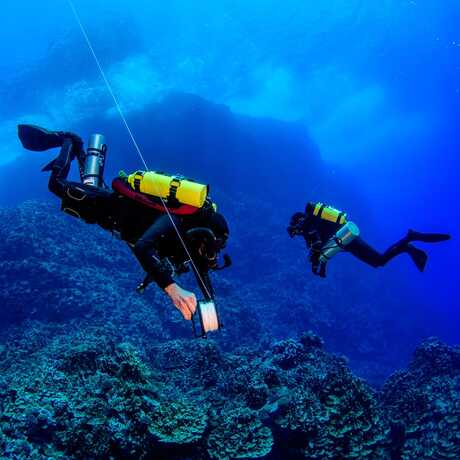Scientific Expeditions
Hope for Reefs: Maldives
Descend into the Maldivian twilight zone with Academy scientists and see how the future of these at-risk ecosystems depends on what we learn today.
An island nation in the Indian Ocean about 500 miles off the southern tip of India, the Maldives is the ninth-smallest country in the world, as well as the closest to sea level. Beneath its sparkling azure waters, however, lie its biggest claim to fame: the seventh-largest coral reef system on Earth—and a completely unexplored mesophotic zone. That is, until this past January.
Through the first-ever deep dives to the Maldives’ never-before-seen mesophotic reefs 100-500 feet below the surface, Academy Hope for Reefs researchers, in partnership with collaborators at the Maldives Marine Research Institute (MMRI) and the Maldives Ministry of Fisheries, have discovered several potentially new-to-science species, conducted the first biodiversity surveys of the region’s mesophotic zone, and uncovered unsettling signs of human impacts on these deep ocean ecosystems.
Expedition highlights
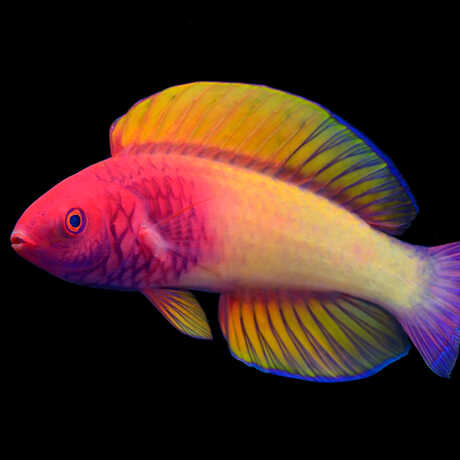
A deluge of deep reef biodiversity
Over the course of nine mesophotic dives to a maximum depth of 403 feet (123 meters), Academy researchers encountered an array of colorful species, expanding our understanding of the region’s biodiversity. Their deep reef finds included a number of new records of fishes not previously known to inhabit the Maldives, and 8+ possibly new-to-science fishes—including the Rose-Veiled Fairy Wrasse, the first Maldivian fish to be described by a local researcher.
Photo © Yi-Kai Tea
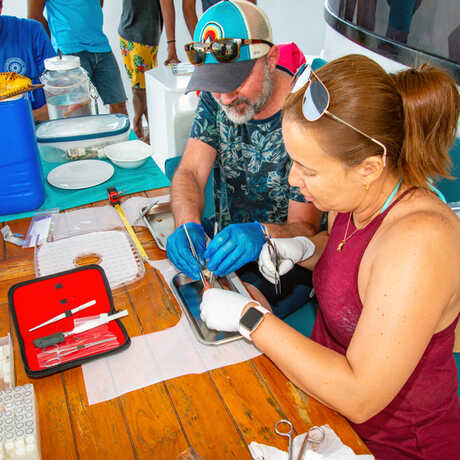
Food for thought (and conservation)
Topside, the team conducted a number of experiments, including one led by Academy researcher Chancey MacDonald, which involved sifting through the stomach contents of collected specimens to determine whether fish species found in both shallow and deep reefs have similar diets. If their diets are the same, then deep reefs might serve as a refuge if the shallow part of their range is disturbed by stressors like climate change or pollution. If their diets are different, then those that prefer shallow reefs might have nowhere to swim for safety, shifting conservation priorities for the species.
Photo: Academy researcher Chancey MacDonald (left) and Collection Manager Claudia Rocha take tissue samples from collected specimens.

Twilight zone trash
Despite their depth, mesophotic reefs are not immune to the scourge of marine pollution. Our researchers found signs of negative human impact, including trash draped across corals 110 meters (360 feet) beneath the ocean’s surface. From rapidly warming waters to ocean acidification to plastic pollution, coral reefs are besieged by a number of existential threats—but there is hope. Through persistent, passionate research, education, collaboration, and advocacy, we can still save and regenerate these vital ecosystems.
Photo: Luiz Rocha © California Academy of Sciences
Partner profile: Ahmed Najeeb
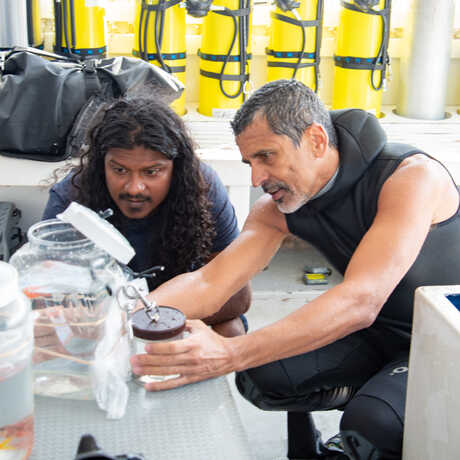
MMRI researcher Ahmed Najeeb (pictured at left) has been a collaborator on the Academy’s Hope for Reefs efforts in the Maldives since the partnership began in 2019. This fall, Najeeb will start graduate school at San Francisco State University through a joint program with the Academy, where he looks forward to sharing his research and passion for marine science with museum visitors.
What's next
This fall, the Hope for Reefs team will return to the Maldives for additional deep dives and biodiversity surveys with the MMRI and the Ministry of Fisheries. This expedition will also involve training MMRI staff on best practices for handling and storing marine specimens as the Academy works with them to develop their local natural history museum and scientific collection—ensuring all Maldivians can access and take pride in their undersea natural wonders.
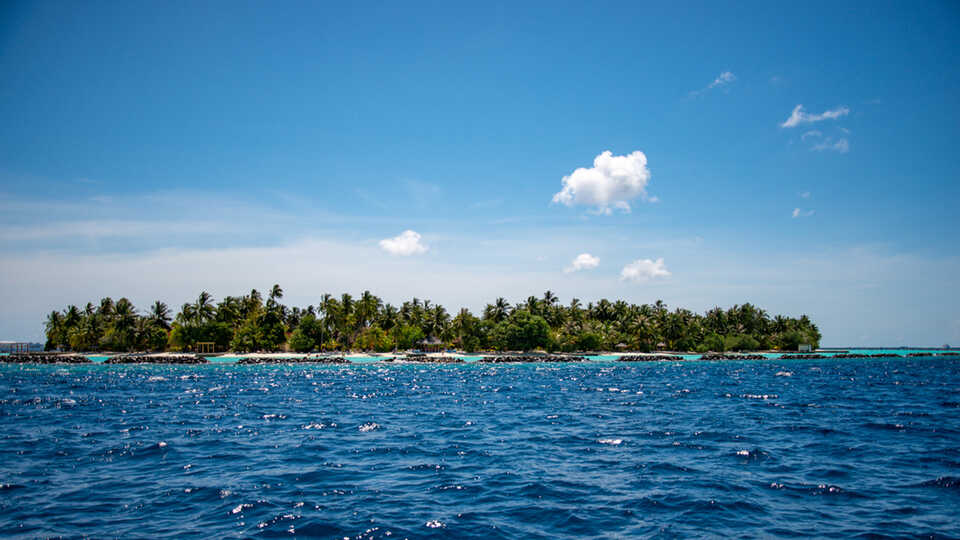
All photos on this page by Claudia Rocha unless otherwise noted.
Where: The Maldives (view map)
When: January 12-February 5, 2022
Why: Mesophotic reef biodiversity surveys; local collaborations
Who: The Academy's Hope for Reefs team (led by Co-Director Luiz Rocha); local partners from Maldivian Marine Research Institute, Maldives Coast Guard, Maldives Ministry of Fisheries
Wow: First-ever mesophotic dives in the Maldives to a maximum depth of 403 feet; discovered 8+ potentially new-to-science species
Keep tabs on our deep-diving Hope for Reefs team by following the Academy’s social media channels and the #hopeforreefs and #CASfieldnotes hashtags.
Gifts of all sizes power Academy science around the world. Consider a donation to support coral reef research in the Maldives and beyond.
